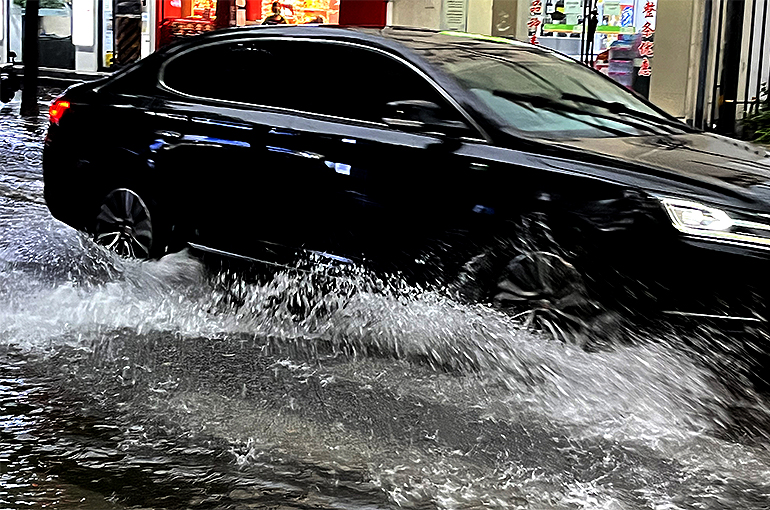 Chinese EV Owners Worry About Driving in Flood Waters
Chinese EV Owners Worry About Driving in Flood Waters(Yicai) June 28 -- With heavy rainfall and flooding hitting many parts of China, including the cities of Changsha and Meizhou, electric vehicle owners have become very much concerned about driving them through flood waters.
China has no regulations on the ability of new energy vehicles to wade through water nor does it require any such parameters to be included in auto manuals, industry insiders said. Since driving in water is a safety issue, they expect the authorities to beef up the rules in the future.
The ability of different EV models to traverse water varies greatly, according to a survey of Chinese automakers carried out by National Business Daily. For example, the Yangwang U8, a luxury sports utility vehicle made by BYD, can go in up to one meter, while its mid-sized SUV Song Plus DM-i can manage just 15 centimeters. The paper also found that the limit of Li Auto’s L9 and L6 SUVs is 50 cm, while that of Great Wall Motor’s Tank 700, a luxury off-road SUV, is 97 cm.
Xpeng Auto told the newspaper that the battery of its mid-sized G6 SUV can be soaked underwater for 48 hours. The company told the Chinese media that its SU7 sedan has a maximum limit of 35 cm under half load based on passenger weight of 150 kilograms and 30 kg of luggage.
Other popular models, such as vehicles under BYD’s Qin, Han, and Yuan series, the Aito M7 jointly developed by Seres Group and Huawei Technologies, FAW-Volkswagen’s ID.4, and Tesla’s Model 3 and Model Y, did not provide any data.
An EVs ability to drive through water depends not only on the depth of the water but also on the vehicle’s design and protection level. The protection level is generally marked by the Ingress Protection Rating, where IP68 is one of the highest levels of protection available. For example, the Yangwang U8’s waterproofing is IP67, and that of its core components is IP68.
Editor: Futura Costaglione